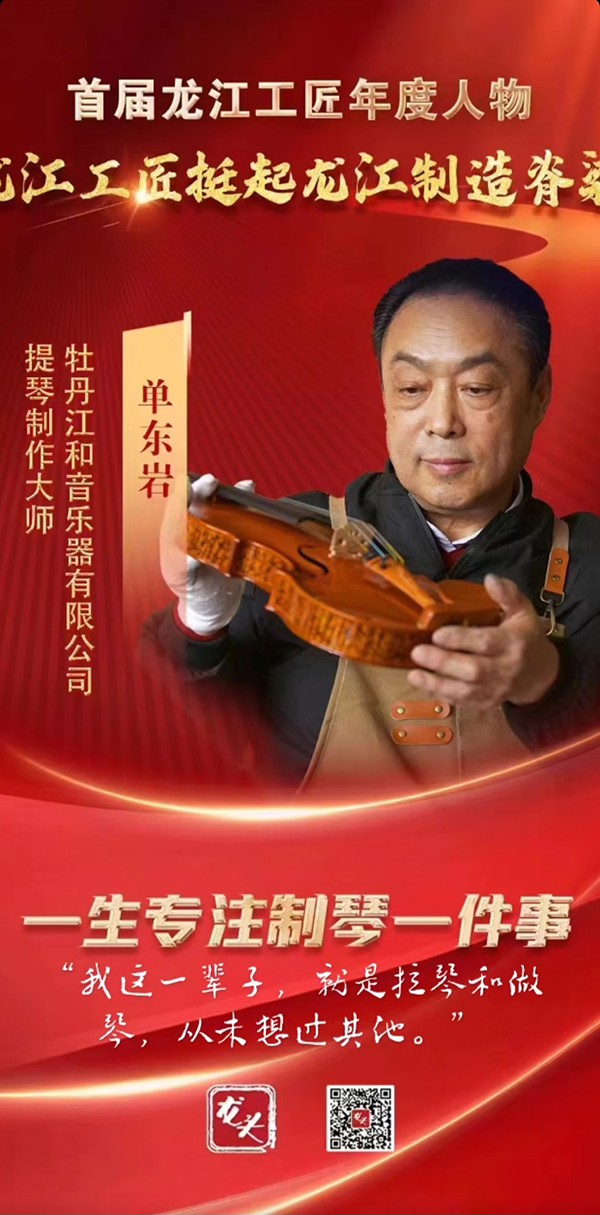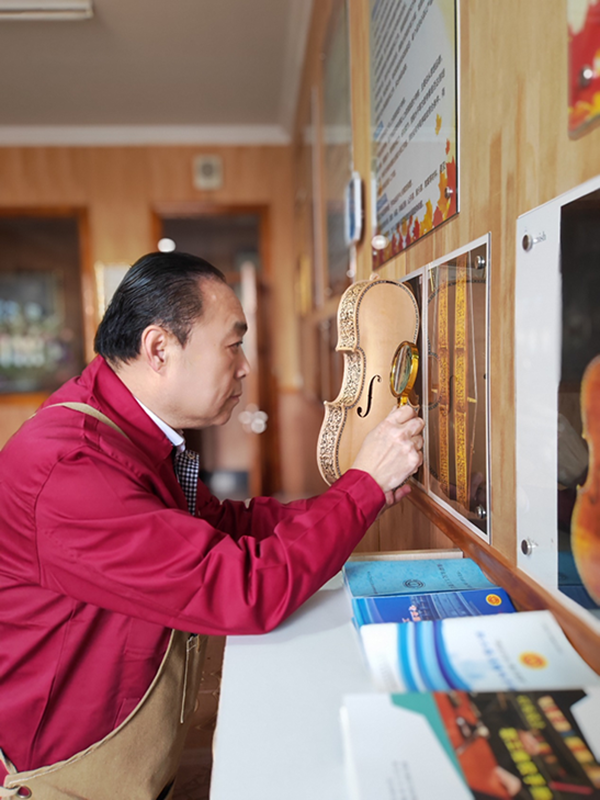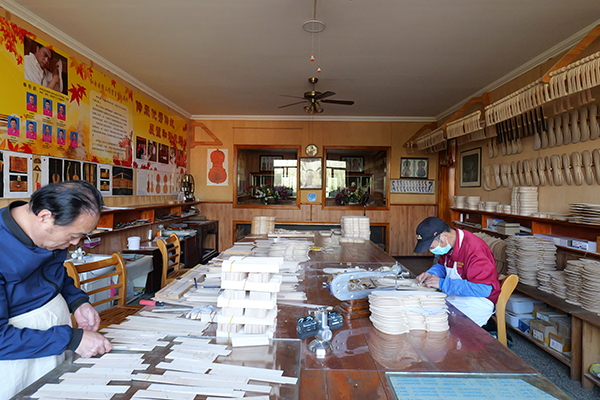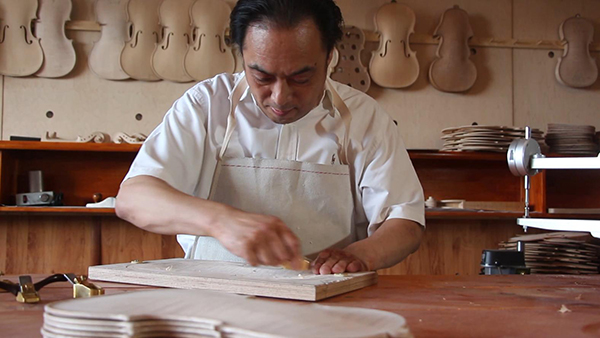Loving the violin, playing the violin—finding joy in music; restoring and crafting violins—devoted to a lifetime with the violin.
Since founding his workshop in 1987, Dongyan Shan has devoted more than three decades to the art of handcrafted violin making. What began as a small operation producing just a few dozen instruments annually has grown into the largest violin export base in Northeast China. Upholding traditional craftsmanship, Mr. Shan meticulously follows more than 100 production steps and adheres to strict European quality standards. From tonewood selection to the fine-tuning of plate thickness and precise placement of the bass bar and sound post, every detail is handled with expert care. In 1993, his instruments entered the international market and quickly gained recognition from European distributors.
Today, Mr. Shan serves as the Chief Luthier of the “Heyin Yifei Master Studio.” He has been honored with the prestigious “Longjiang Craftsmanship Award” and the “National May 1st Labor Medal” for his outstanding contributions to the violin-making industry. He continues to lead innovation at Heyin Musical Instruments, developing new models such as the finely carved quartet series, further elevating the global reputation of Chinese-made violins.
Since producing his first batch of high-quality violins in 1987, Mr. Shan has personally crafted and inspected over 10,000 instruments. Under his leadership, Heyin Musical Instruments now exports approximately 15,000 violins annually to customers around the world. The company’s commitment to traditional handcraftsmanship has not only brought acclaim to its instruments but also earned the city of Mudanjiang the nickname “City of Violin Making.” Chinese high-end violins continue to win international awards, helping local craftsmanship reach global audiences and allowing the refined sound of handmade violins to resonate worldwide.
“I’ve spent my entire life making and playing violins—nothing else ever crossed my mind,” says Mr. Shan. His workbench is covered with chisels, knives, and carving tools of every shape and size. When crafting a violin, he works with complete focus and precision. From shaping the plates to carving the f-holes and positioning internal components, every step reflects a deep understanding of both acoustics and aesthetics.
Among all the steps in violin making, wood selection is one of the most crucial. “It’s hard to explain why I choose one piece of wood over another,” Mr. Shan says. “I rely on the feel, the sound when I tap it. The more you work with it, the more you understand.” His humble words reflect decades of experience. Much of his technique cannot be taught through words—it must be learned by doing, through patient observation, trial, and refinement. This is the essence of true craftsmanship, and the reason his instruments are celebrated worldwide.




